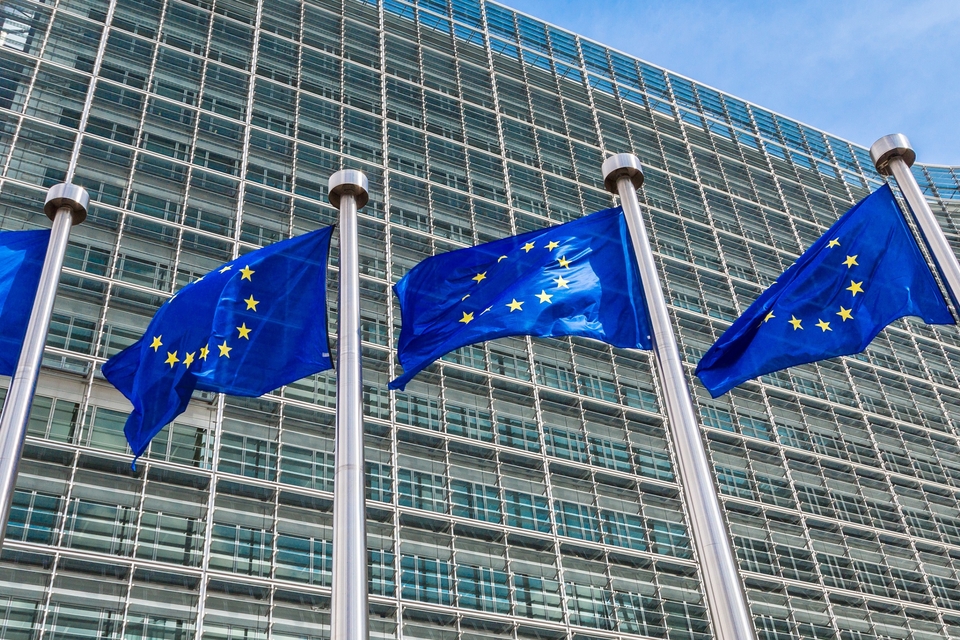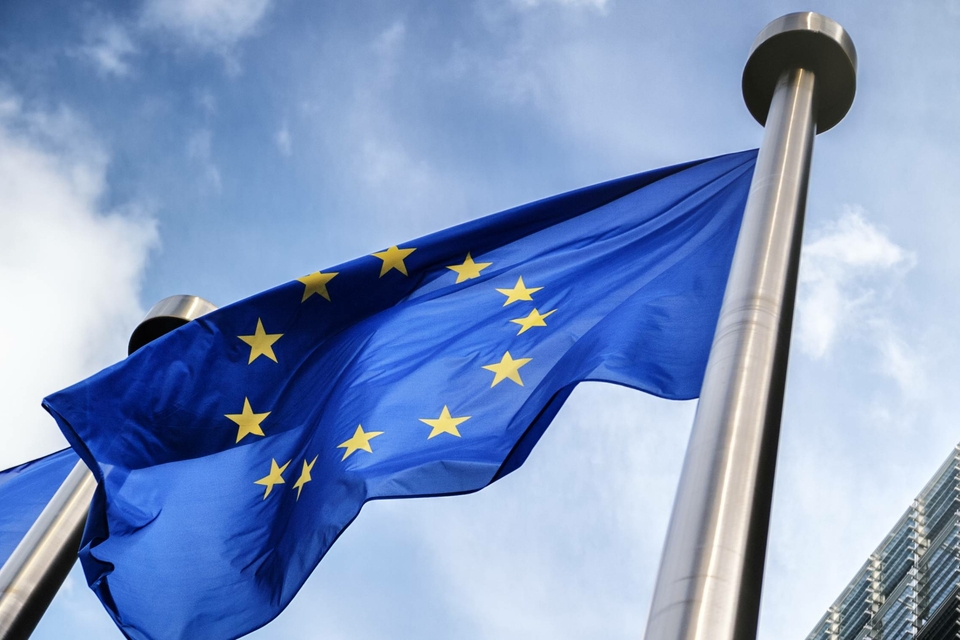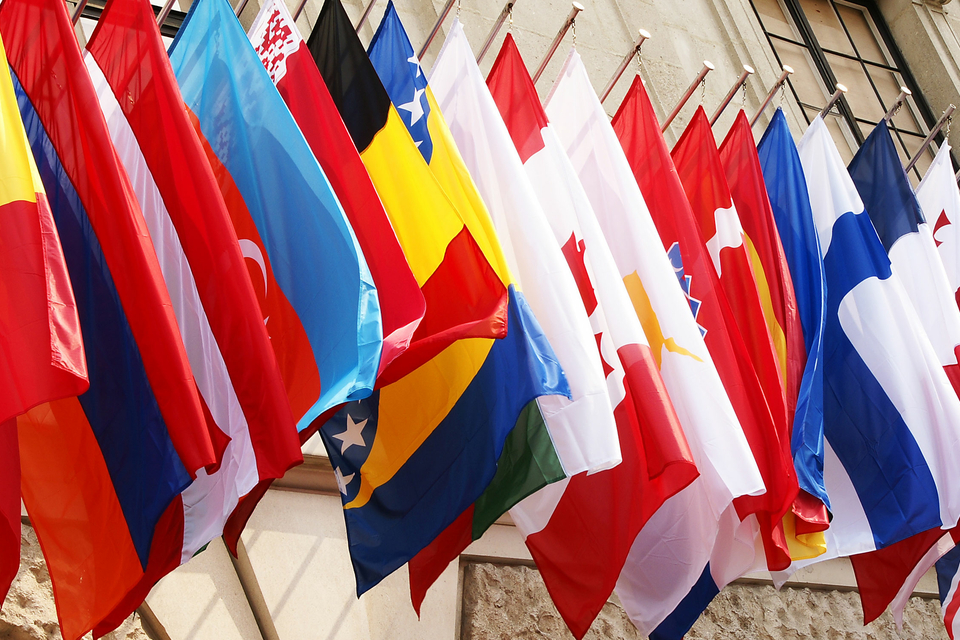African Union
The African Union's Continental AI Strategy sets the stage for a unified approach to AI governance across the continent.

Artificial intelligence (AI) has made enormous strides in recent years and has increasingly moved into the public consciousness.
Subscribe
We encourage you to subscribe to receive AI-related updates.
Explore Trendscape Our take on the interconnected global trends that are shaping the business climate for our clients.
Increases in computational power, coupled with advances in machine learning, have fueled the rapid rise of AI. This has brought enormous opportunities, as new AI applications have given rise to new ways of doing business. It has also brought potential risks, from unintended impacts on individuals (e.g., AI errors harming an individual's credit score or public reputation) to the risk of misuse of AI by malicious third parties (e.g., by manipulating AI systems to produce inaccurate or misleading output, or by using AI to create deepfakes).
Governments and regulatory bodies around the world have had to act quickly to try to ensure that their regulatory frameworks do not become obsolete. In addition, international organizations such as the G7, the UN, the Council of Europe and the OECD have responded to this technological shift by issuing their own AI frameworks. But they are all scrambling to stay abreast of technological developments, and already there are signs that emerging efforts to regulate AI will struggle to keep pace. In an effort to introduce some degree of international consensus, the UK government organized the first global AI Safety Summit in November 2023, with the aim of encouraging the safe and responsible development of AI around the world. The EU is also implementing the first comprehensive horizontal legal framework for the regulation of AI systems across EU Member States (the EU AI Act is addressed in more detail here: AI watch: Global regulatory tracker - European Union, and you can read our EU AI Act Handbook here).
Most jurisdictions have sought to strike a balance between encouraging AI innovation and investment, while at the same time attempting to create rules to protect against possible harms. However, jurisdictions around the world have taken substantially different approaches to achieving these goals, which has in turn increased the risk that businesses face from a fragmented and inconsistent AI regulatory environment. Nevertheless, certain trends are becoming clearer at this stage:
Businesses in almost all sectors need to keep a close eye on these developments to ensure that they are aware of the AI regulations and forthcoming trends, in order to identify new opportunities and new potential business risks. But even at this early stage, the inconsistent approaches each jurisdiction has taken to the core questions of how to regulate AI is clear. As a result, it appears that international businesses may face substantially different AI regulatory compliance challenges in different parts of the world. To that end, this AI Tracker is designed to provide businesses with an understanding of the state of play of AI regulations in the core markets in which they operate. It provides analysis of the approach that each jurisdiction has taken to AI regulation and provides helpful commentary on the likely direction of travel.
Because global AI regulations remain in a constant state of flux, this AI Tracker will develop over time, adding updates and new jurisdictions when appropriate. Stay tuned, as we continue to provide insights to help businesses navigate these ever-evolving issues.
The African Union's Continental AI Strategy sets the stage for a unified approach to AI governance across the continent.

Voluntary AI Ethics Principles guide responsible AI development in Australia, with potential reforms under consideration.

The enactment of Brazil's proposed AI Regulation remains uncertain with compliance requirements pending review.

AIDA expected to regulate AI at the federal level in Canada but provincial legislatures have yet to be introduced.

The Interim AI Measures is China's first specific, administrative regulation on the management of generative AI services.

Despite congressional activity on AI in Colombia, regulation remains unclear and uncertain.

The Council of Europe is developing a new Convention on AI to safeguard human rights, democracy, and the rule of law in the digital space covering governance, accountability and risk assessment.

The successful implementation of the EU AI Act into national law is the primary focus for the Czech Republic, with its National AI Strategy being the main policy document.

The EU introduces the pioneering EU AI Act, aiming to become a global hub for human-centric, trustworthy AI.

France actively participates in international efforts and proposes sector-specific laws.

The G7's AI regulations mandate Member States' compliance with international human rights law and relevant international frameworks.

Germany evaluates AI-specific legislation needs and actively engages in international initiatives.

Hong Kong lacks comprehensive AI legislative framework but is developing sector-specific guidelines and regulations, and investing in AI.

National frameworks inform India’s approach to AI regulation, with sector-specific initiatives in finance and health sectors.

Israel promotes responsible AI innovation through policy and sector-specific guidelines to address core issues and ethical principles.


Japan adopts a soft law approach to AI governance but lawmakers advance proposal for a hard law approach for certain harms.

Kenya's National AI Strategy and Code of Practice expected to set foundation of AI regulation once finalized.

Nigeria's draft National AI Policy underway and will pave the way for a comprehensive national AI strategy.

Position paper informs Norwegian approach to AI, with sector-specific legislative amendments to regulate developments in AI.

The OECD's AI recommendations encourage Member States to uphold principles of trustworthy AI.

Saudi Arabia is yet to enact AI Regulations, relying on guidelines to establish practice standards and general principles.

Singapore's AI frameworks guide AI ethical and governance principles, with existing sector-specific regulations addressing AI risks.

South Africa is yet to announce any AI regulation proposals but is in the process of obtaining inputs for a draft National AI plan.

South Korea's AI Act to act as a consolidated body of law governing AI once approved by the National Assembly.

Spain creates Europe's first AI supervisory agency and actively participates in EU AI Act negotiations.

Switzerland's National AI Strategy sets out guidelines for the use of AI, and aims to finalize an AI regulatory proposal in 2025.

Draft laws and guidelines are under consideration in Taiwan, with sector-specific initiatives already in place.

Turkey has published multiple guidelines on the use of AI in various sectors, with a bill for AI regulation now in the legislative process.

Mainland UAE has published an array of decrees and guidelines regarding regulation of AI, while the ADGM and DIFC free zones each rely on amendments to existing data protection laws to regulate AI.

The UK prioritizes a flexible framework over comprehensive regulation and emphasizes sector-specific laws.

The UN's new draft resolution on AI encourages Member States to implement national regulatory and governance approaches for a global consensus on safe, secure and trustworthy AI systems.

The US relies on existing federal laws and guidelines to regulate AI but aims to introduce AI legislation and a federal regulation authority.


Despite congressional activity on AI in Colombia, regulation remains unclear and uncertain.
Currently, there are no specific laws, statutory rules, or regulations in Colombia that directly regulate AI. However, the Colombian government has issued and approved different legal instruments. For example:
CONPES 4144 establishes Colombia's National Artificial Intelligence (AI) Policy.1 The policy aims to position Colombia as a competitive country in AI through six strategic objectives:
External Directive 002 of 2024 by the Colombian Data Protection Authority (the Superintendence of Industry and Commerce) (SIC).2 This provides guidance on the processing of personal data for use with AI, in accordance with the Colombian General Data Protection Framework. The SIC provides instructions on ten points:
More than 20 bills that are intended to regulate AI have been proposed to Congress.3 However, at the time of writing, none have been approved.
Most recently, on May 7, 2025, a comprehensive bill backed by the Ministries of Science and of Information and Communication Technologies (ICT), was proposed to Congress (the "Proposed Bill").4
The Proposed Bill seeks to:
The Proposed Bill still needs to be scrutinized, debated and voted on—by both the Senate and the House of Representatives—before being approved by the President. Therefore, it is currently unclear if the Proposed Bill will be approved, and if so, what the final text will look like. No date has been provided for possible discussion in Congress, and despite the government's backing, it is not expected to be a legislative priority.
There are various laws and regulations that do not directly seek to regulate AI but may be applied to its development, deployment or use in Colombia. Key examples include:
Currently there is no legal definition of AI. However, the Government has used the definition provided in the National Digital Transformation Policy, CONPES 3975 (2019).12
This definition describes AI as: "a field of computer science dedicated to solving cognitive problems commonly associated with human intelligence or intelligent beings, understood as those who can adapt to changing situations. Its basis is the development of computer systems, data availability and algorithms."
Colombia's proposed AI regulation framework presently features a wide territorial reach. According to the latest draft presented to Congress, the rules would cover the development, deployment, and use of AI systems within Colombian borders, applying equally to both domestic and international organizations.
The Proposed Bill does not currently take a sector-specific approach.13 The regulation would govern the development, deployment, and use of AI systems across all sectors, without limiting its application to any particular industry.
The Proposed Bill establishes a clear framework of compliance roles, closely aligned with international best practices and tailored to the local context.
The main compliance role identified in the Proposed Bill is "Responsible for AI":14
The AI Bill states that its core principles are to promote competitive productivity, ensure transparency, and to foster productivity through advancing fundamental AI research and personnel development. While advancing these goals, the government aims to investigate and guide organizations away from the improper use of AI, which are uses that may lead to the violation of rights or harm prosperity.
Additionally, the Hiroshima Principles identify several significant risks, including: disinformation, copyright, cybersecurity, risks to health and safety, and societal risks (e.g., the ways in which advanced AI systems can give rise to harmful bias and discrimination).
The government has noted the following risks as ones that Japan should prioritize: safety, privacy and fairness, national security and crime, property protection, and intellectual property.
Further, regarding copyright, in-depth discussions are being held in Japan about how existing laws (i.e., the Copyright Act of Japan) should address issues concerning rights and harms that may arise from generative AI. Additionally, the Council of the Agency for Cultural Affairs has announced its position regarding copyright where AI is trained on the works of humans and AI-generated content.
The Proposed Bill includes the following proposal for risk categorization:15
The Proposed Bill sets out a comprehensive suite of compliance requirements, many of which are risk-based and tailored to the role and activity of the actor in the AI value chain. Key requirements include:
Risk Classification and Management:16
Transparency and Explainability:17
Human Oversight and Control:18
Data Protection and Privacy:19
Non-Discrimination and Equity:20
Accountability and Documentation:21
Workforce Transition and Training:
The Proposed Bill names the Ministry of Science as the National Authority on AI.22 However, the SIC will continue to oversee data protection and consumer matters.23
The Proposed Bill outlines the following possible sanctions:24
1 See CONPES 4144 here.
2 See External Directive 002 of 2024 here.
3 See an article from El Espectador here.
4 See the press release here.
5 See the press release here.
6 See the Colombian General Data Protection Framework (Statutory Law 1581 of 2012) here.
7 See the Colombian General Data Protection Framework (Decree 1074 of 2015) here.
8 See the Colombian Consumer Protection Statute, Law 1480 of 2011 here.
9 See the Andean Community of Nations Decision 351 of 1993 (Copyright) here.
10 See the Andean Community of Nations Decision 486 of 2000 here.
11 See the Colombian Copyright Law, Law 23 of 1982 here.
12 See the National Digital Transformation Policy, CONPES 3975 (2019) here.
13 See Article 2 of the Proposed Bill (Note that although the Bill was proposed to Congress on May 7th, it has not been published in the official Congress Gazette, so it is currently lacking a Bill number)
14 See Articles 2 and 4 of the Proposed Bill.
15 See Article 5 of the Proposed Bill.
16 See Article 5 of the Proposed Bill.
17 See Article 3 of the Proposed Bill.
18 See Article 3 of the Proposed Bill.
19 See Article 3 of the Proposed Bill.
20 See Article 3 of the Proposed Bill.
21 See Article 5 of the Proposed Bill.
22 See Article 6 of the Proposed Bill.
23 See Article 31 of the Proposed Bill.
24 See Article 30 of the Proposed Bill.
White & Case means the international legal practice comprising White & Case LLP, a New York State registered limited liability partnership, White & Case LLP, a limited liability partnership incorporated under English law and all other affiliated partnerships, companies and entities.
This article is prepared for the general information of interested persons. It is not, and does not attempt to be, comprehensive in nature. Due to the general nature of its content, it should not be regarded as legal advice.
© 2025 White & Case LLP
Sergio Michelsen
Partner, Brigard Urrutia
+57 60 13 46 20 11
smichelsen@bu.com.co
Andrés Fernández
Director, Brigard Urrutia
+57 60 13 46 20 11
afernandezdecastro@bu.com.co
Nicolás Albornoz
Associate, Brigard Urrutia
+57 60 13 46 20 11
nalbornoz@bu.com.co